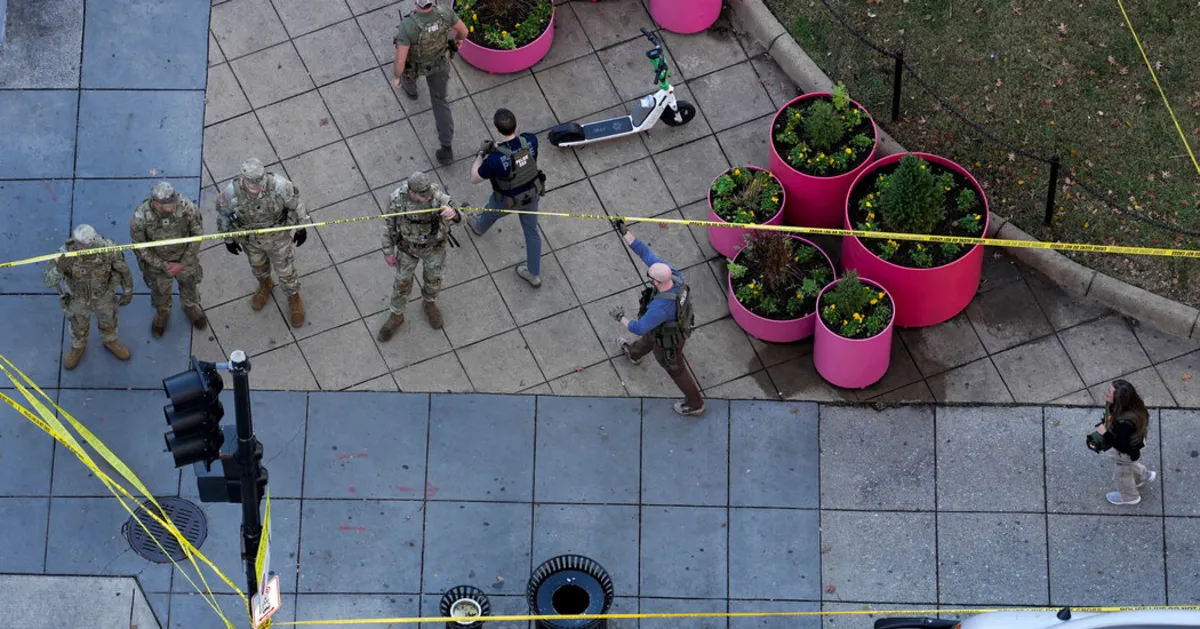
As part of a significant deployment initiated by the president in August, over 2,000 National Guard members from West Virginia, the District of Columbia, and several other states are currently stationed in Washington, D.C. This deployment aims to provide a highly visible presence to combat rising crime rates in the nation's capital. Recently, a shooting incident occurred around 2:15 p.m., raising concerns about safety and security in the area.
According to Jeffery Carroll, the executive assistant chief of the Washington Metropolitan Police Department, the shooter approached a corner, raised a weapon, and opened fire at the National Guard troops. It has been reported that the gunman was also shot during the altercation, but authorities are still determining who inflicted the injury. In response, former President Donald Trump stated via social media that the shooter would “pay a very steep price” for their actions.
The shooting occurred near the White House, specifically in a tourist-friendly area close to the entrance of the Farragut West metro station. National Guard personnel have maintained a daily presence in this area, often observed riding the escalators. This heightened vigilance is part of ongoing efforts to ensure public safety.
Following the incident, Gov. Patrick Morrisey of West Virginia initially reported on social media that two National Guard members had been killed. However, he later retracted this statement, citing conflicting reports regarding the severity of the situation. This inconsistency has fueled confusion about the actual conditions of the troops involved.
Stacey Walters, a nurse residing in Washington, described her experience during the shooting. She was on her way to the dry cleaners when she heard two gunshots. "I wanted to cry. I’ve never been so close to something like that, let alone at the holidays," she shared. The incident has left both locals and tourists shaken, highlighting the unexpected dangers even in familiar surroundings.
This shooting incident has reignited discussions about the controversial deployment of troops in Washington, D.C. Under the direction of President Trump, troops have been stationed at various tourist locations, leading to legal challenges regarding the legitimacy of their presence. A federal judge recently ruled to temporarily suspend the deployment, deeming it likely illegal.
The National Guard is a state-based military force comprising hundreds of thousands of trained soldiers who typically serve part-time. They can be activated during times of need, such as natural disasters, wars, or civil unrest. When not on duty, National Guard members often hold civilian jobs or pursue their education.
The National Guard is split into two main components: the Army National Guard and the Air National Guard. Each serves as a reserve force for their corresponding active-duty military branch. National Guard troops can be deployed overseas to support military operations, as witnessed during the Iraq and Afghanistan wars.
Both state governors and the president have the authority to activate National Guard units. Historically, presidential activation has typically followed requests from state or local officials. For instance, President George H.W. Bush activated California National Guard troops in 1992 to address riots following the Rodney King verdict. In a more recent example, President Trump deployed the California National Guard in response to protests against his immigration policies, marking a significant shift in the traditional use of state troops.
Following the shooting, two members of the West Virginia National Guard were reported to be in critical condition. Mayor Muriel Bowser of Washington characterized the attack as a “targeted shooting.” It took place near the Farragut West Metro station, just around the corner from Lafayette Square and the White House, raising concerns among tourists and locals alike.
As reports circulated, many tourists began questioning whether the shooter had been apprehended, while police confirmed that a suspect was in custody. In a city familiar with the presence of law enforcement and security personnel, the atmosphere became tense as yellow police tape cordoned off the area.
Eyewitnesses, including Tim Moye, who was visiting from Georgia, recounted their experiences of the chaotic scene. “I knew right away it was shooting,” he said, reflecting on the unsettling reality of violence during a holiday visit. Jamie McGee, who was dining nearby, described a similar experience, observing National Guard soldiers rushing past just as the sirens began to wail.
This incident not only underscores the ongoing challenges faced by law enforcement in urban settings but also highlights the critical role of the National Guard in ensuring public safety during turbulent times.